
views
Using an All Breed Pedigree Query
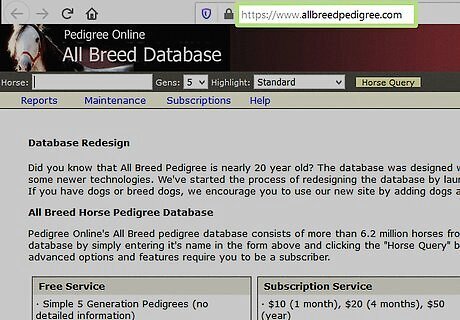
Visit the All Breed Pedigree site. Allbreedpedigree.com is a great online resource for horse owners wishing to research their horse's bloodline. In this section, you'll learn how to perform a pedigree query with this site.
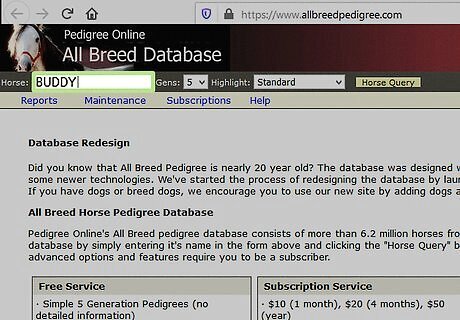
Enter the horse's registered name in the top left corner. Your horse's official name should be on the papers that you received when you purchased it or had it registered. Enter this name in the search bar, taking care to spell it exactly as it is registered.
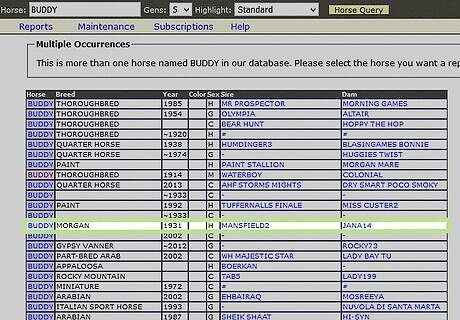
Check the results for your horse. If there's only one horse with the name you entered, the website will automatically take you to that horse's page. If not, you'll see a list of horses with the same name. Use the information on this page to determine which of the horses, if any, is yours. The information you'll see includes: The horse's name. The year of the horse's birth. The horse's color. The horse's sex characteristics (not strictly male/female — includes classifications like gelding, colt, etc.) The horse's sire and dam. The sire is its father and the dam is its mother. While the allpedigree.com database is very extensive and dates back to the 1800s in some cases, not all horses will be in it. Unregistered horses are especially unlikely to appear.
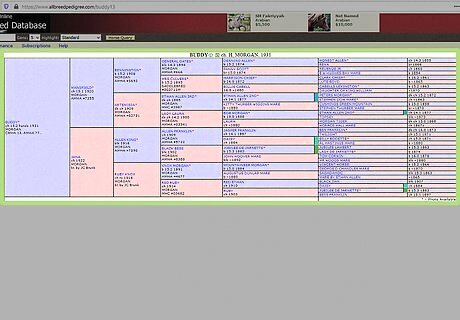
Click the horse's name to view its pedigree. On the list of horses, click on any name to see that particular horse's pedigree. You'll be taken to a page that shows your horse's family tree. Your horse is at the far left and its oldest ancestors are at the far right. You can click any horse's name on this page to view their pedigree.
Using Other Online Resources
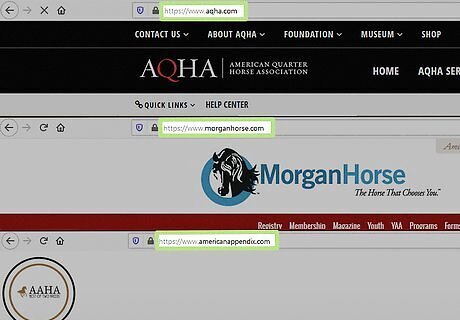
Check the breed association website. If you know your horse's breed, it shouldn't be difficult to find its breed association with a quick search engine query. Oftentimes, breed registry websites will offer limited pedigree services for free, though some charge a minor fee. This varies from association to association. Just a few breed association sites that may be of use to you are below; there are many, many more. www.aqha.com — the site of the American Quarter Horse Association www.morganhorse.com — the site of the American Morgan Horse Association www.americanappendix.com/ — the site of the American Appendix Horse Association
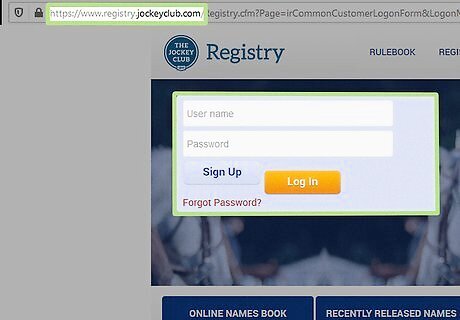
Try using the Jockey Club site for racing horses. The Jockey Club operates perhaps the most extensive registry for American racing horses. If your horse or one of its ancestors was used for racing, you may be able to find its pedigree here. Visit www.registry.jockeyclub.com/Registry.cfm to get started. You will need to create an account to use the registry.
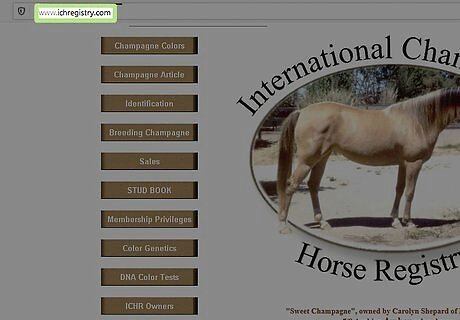
Use other, more specialized registry sites. Smaller registries can be helpful if your horse has special characteristics or a unique history. For example, the International Champagne Horse Registry is a resource for horses that have one or two special "Champagne" genes that affect its color. If these smaller registries don't advertise pedigree services on their sites, get in touch with the registry's leadership to inquire directly.
Using a Horse's Qualities
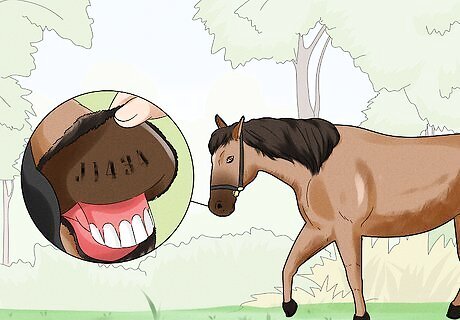
Look for a lip tattoo on racing horses. Horses that have raced on a track in the United States will usually have a tattoo on their upper lip. If your horse has this kind of tattoo, you're in luck. The Jockey Club offers a free tattoo lookup service.You can use this service either by contacting the Club directly or via its official site.
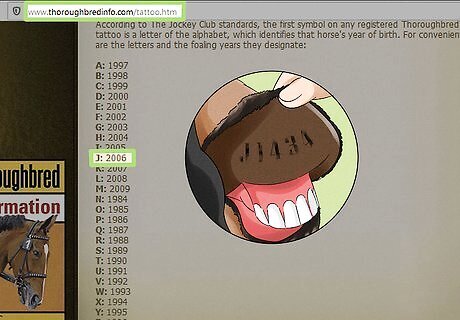
Learn the symbolism used in horse tattoos. The upper lip tattoo used for racing horses almost always follows a recognizable pattern &mdash: first a letter or symbol, then a series of numbers. There are a few things you can learn from this "code" even if you don't contact the Jockey Club: If the tattoo starts with a letter, the horse is a thoroughbred. The letter corresponds to the year of its birth. Click here for a guide to which letter matches up with each year. If the tattoo starts with an asterisk, the horse is an appendix horse (a cross between a thoroughbred and a quarter horse).

Research your horse's brand. The symbols used in a horse's brand can reveal clues about its age, breed, birthplace, and more. Ranches and farms often have their own unique brands; other times, breeders use systems of symbols to encode information into the brand. Unfortunately, since brands vary widely, there isn't a single convenient way to figure out what your horse's brand means, but a quick search engine query or a call to your breed registry should get you started.

Look for clues in your horse's name. When it comes to horses, there can be a surprising amount of information in a name. While not all names carry significant meaning, many horses are named after an important sire (male ancestor). Some are even named after the location where they were raised. This varies greatly by breed and bloodline. As an example, Shire horses will often use the name of the barn or farm they were born at as part of their names.














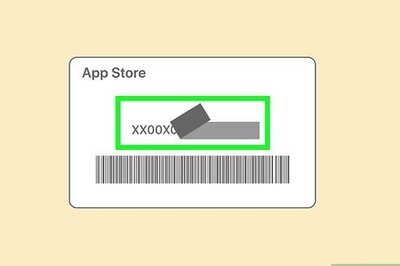





Comments
0 comment